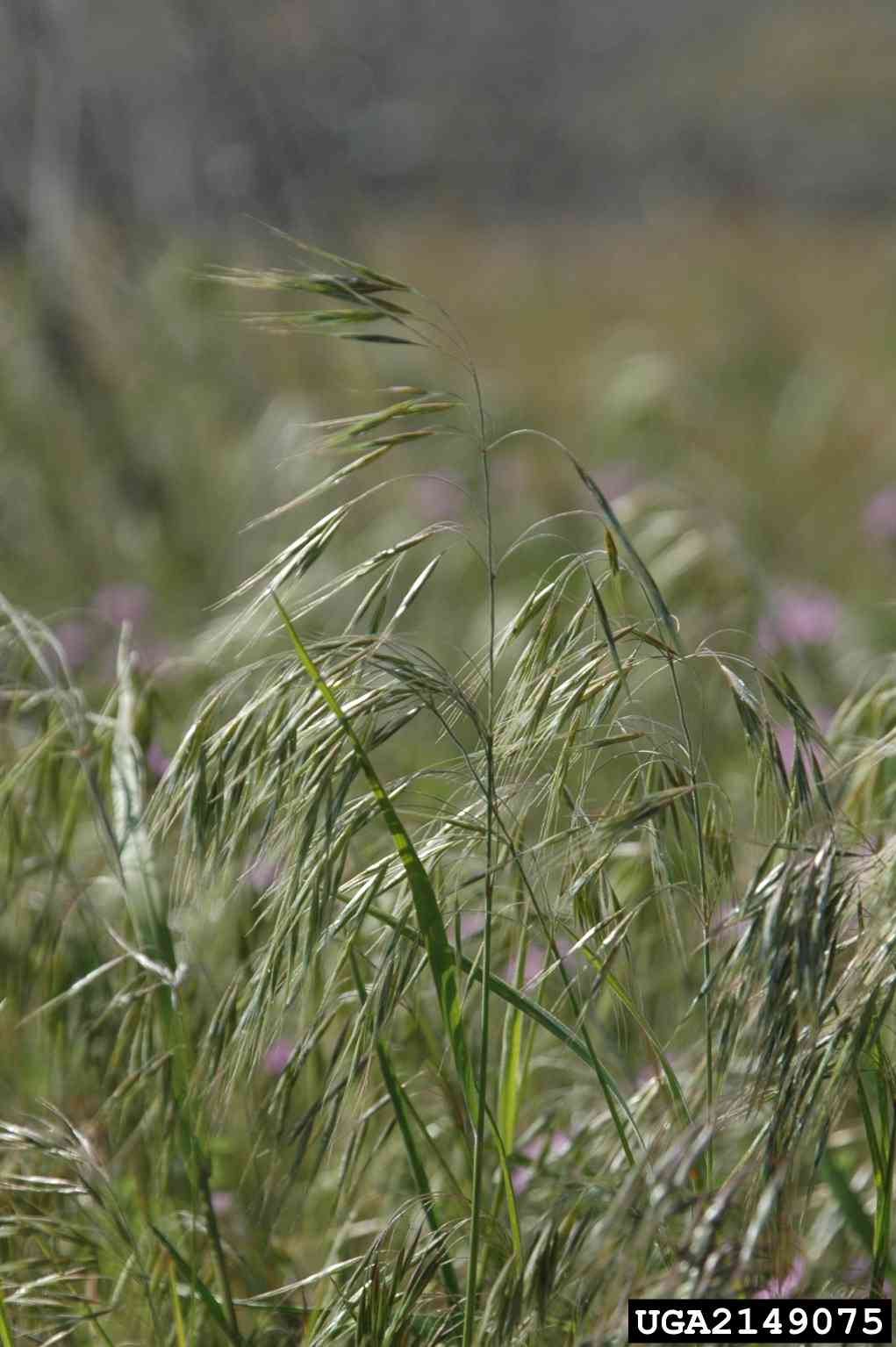|
Home
4
Targeted Grazing
Prescriptions:
 Forbs
Forbs
 Grasses
Grasses
 Woody Plants
Woody Plants
|
Cheatgrass
or Downy Brome
Bromus
tectorum |
|
|
|
Description:
Cheatgrass is an aggressive winter annual grass
that can grow up to 2 feet tall. Seeds germinate
in the late winter or early spring. The leaves
are flat, wide, and bristly at the base, giving
the plant a downy appearance. Each plant can
have multiple upright stemps. Cheatgrass flowers
as an open panicle, each with five to eight
florets tipped with a short awn. Plants mature
to a wheat color by early summer.
|
  |
|
Management Guidelines:
Type and Class of
Livestock:
All classes of sheep, goats, and cattle.
Grazing Objective:
Intense flash grazing (i.e., grazing for short
period) is recommended to remove biomass,
decrease plant density, and suppress flowering.
Growth Stage for
Treatment:
Graze cheatgrass plants as early as possible
without harming desirable perennial plants, and
repeat grazing to prevent seed production.
Livestock readily consume cheatgrass when it is
green and before it turns purple. A minimum of
two treatments per year is recommended. Two or
more years of grazing is required to
significantly suppress cheatgrass populations.
Potential Effectiveness:
Surveys and literature agree that targeted
grazing is an effective tool to control
cheatgrass. Heavy repeated grazing for two or
more years will reduce plant density, size, and
seed production. Grazing must be closely
monitored to avoid damage to desirable perennial
plant species. Control of cheatgrass can be very
effective when livestock are intensively managed
and grazing occurs before plants turn purple.
Grazing can also be used in conjunction with
mechanical methods, herbicides, and controlled
burning. |
|
References:
Cook, W.C. and L.E. Harris. Nutritive value of
cheatgrass and crested wheatgrass on spring
ranges of Utah. Journal of Range Management
5:331-337
Ganskopp, D. and D. Bohnert. 2001. Nutritional
dynamics of 7 northern Great Basin grasses.
Journal of Range Management 54:640-647.
Knapp, P.A. 1996. Cheatgrass (Bromus tectorum
L) dominance in the great basin desert -
History, persistence, and influences to human
activities. Global Environmental Change
6:37-52.
Mosley, J.C. 1996. Prescribed sheep grazing to
suppress cheatgrass: A review. Sheep and Goat
Research Journal 12:74-80.
Murray, R.B. 1971. Grazing capacity, sheep
gains: Cheatgrass, bunchgrass ranges in southern
Idaho. Journal of Range Management
24:407-410.
Murray, R.B. and J.O. Klemmedson. 1968.
Cheatgrass range in southern Idaho: Seasonal
cattle gains and grazing capacities. Journal
of Range Management 21:308-312.
Stewart, G. and A.C. Hull. 1949. Cheatgrass (Bromus
tectorum L) an ecologic intruder in southern
Idaho. Ecology 30:58-74. |
|